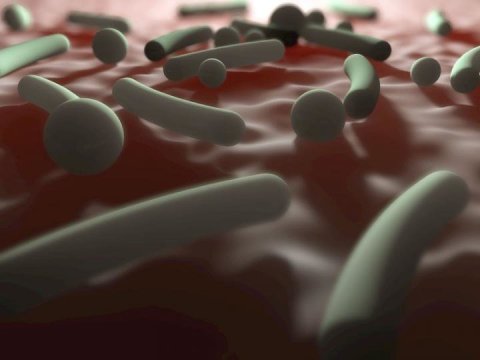
A comprehensive analysis of changes in the
intestinal microbial population during the first three years of life has
revealed some of the impacts of factors such as mode of birth --
vaginal versus cesarean section -- and antibiotic exposure, including
the effects of multiple antibiotic treatments. In the June 15 issue of Science Translational Medicine,
the team led by investigators from Massachusetts General Hospital (MGH)
and the Broad Institute describes findings that may help understand how
the gut microbiome is established and how the combination of microbes
in individual children may contribute to the risk of developing
conditions like type 1 diabetes and inflammatory bowel disease.
"One of the key motivations of microbiome research is that the
microbial population of early childhood appears to be critical to human
health, in that decreased diversity of the gut microbiome has been
implicated in a number of allergic and autoimmune diseases," says Ramnik
Xavier, MD, PhD, chief of the MGH Gastrointestinal Unit and an
institute member at the Broad. "Not only did our study analyze the gut
microbiome at a high resolution that allowed us to identify both
microbial species and strains, but by following our study participants
over time we also were able to uncover findings that would not have been
revealed by single samples from each patient.
In collaboration with a team of Finnish researchers they have worked
with for several years, the MGH/Broad team enrolled a group of 39
children from whom monthly stool samples were taken beginning after
birth and continuing until age 36 months. Each sample was analyzed with a
standard, RNA-based sequencing procedure used to identify microbial
populations, and more detailed whole-genome sequencing was conducted on
about 25 percent of samples to reveal the specific strains of identified
microbial species. During the study period, 20 of the participants
received antibiotics to treat respiratory or ear infections, with those
children receiving from 9 to 15 treatments.
Many features of the developing gut microbiome were found to be
consistent across all study participants, with the presence and
abundance of particular species rising and falling at similar age
points. The researchers also found several clear differences from the
findings of previous studies regarding the impact of breastfeeding.
Earlier studies comparing breast-fed with formula-fed children have
reported increased abundance of Bifidobacterium species in those who
were breast-fed for longer periods of time. All of the children in this
study were breastfed for some period of time, and while there was some
correlation between the length of breastfeeding and levels of
Bifidobacteria, some of the children in this group had low levels of
those bacteria even while being breastfed.
Previous studies also have reported finding a particular microbiome
signature, with low abundance of the Bacteriodes genus, in
cesarean-section-delivered children during the first 6 months of life.
In the current study, the researchers found the same pattern in the four
cesarean children but were surprised to find it also occurred in seven
of the vaginally born children. No identified factors, including
maternal antibiotic treatment, differentiated between vaginally born
children with or without the low-Bacteriodes signature, but since this
pattern has been associated with reduced overall diversity of the
microbiome, it bears further investigation, Xavier notes.
Children who had been exposed to antibiotic treatment had a reduction
in the diversity of their microbial population, a difference that was
even greater in those who also had the low-Bacteriodes signature.
Whole-gene sequencing also found that, in antibiotic-exposed children,
bacterial species tended to be fewer and dominated by a single strain,
instead of the several species and strains seen in those not treated
with antibiotics. The analysis of many samples taken over time revealed
that the microbiomes of antibiotic-exposed children were less stable,
particularly around the time of antibiotic treatment.
The presence of genes known to confer antibiotic resistance rose
rapidly during antibiotic treatment. Levels of resistance genes encoded
on microbial chromosomes dropped quickly after treatment was
discontinued. But resistance genes encoded on small DNA molecules called
mobile elements -- one means by which resistance genes can be
transmitted among bacteria -- persisted much longer after antibiotic
withdrawal.
"Some of the things we'd like to investigate next are how the
microbiome gets established during the first week of life --
particularly what the primary mechanisms of transmission are -- how the
composition of the early-life gut microbiome affects children's health,
and what factors underlie the resilience of the infant microbiome, says
Xavier, who is the Isselbacher Professor of Medicine in Gastroenterology
at Harvard Medical School and a member of the MGH Center for
Computational and Integrative Biology (CCIB). "The kind of
high-resolution sequencing done in this study should lead to better
understanding of the natural history of the infant gut microbiome and
the impact of perturbations caused by antibiotics and environmental
factors."